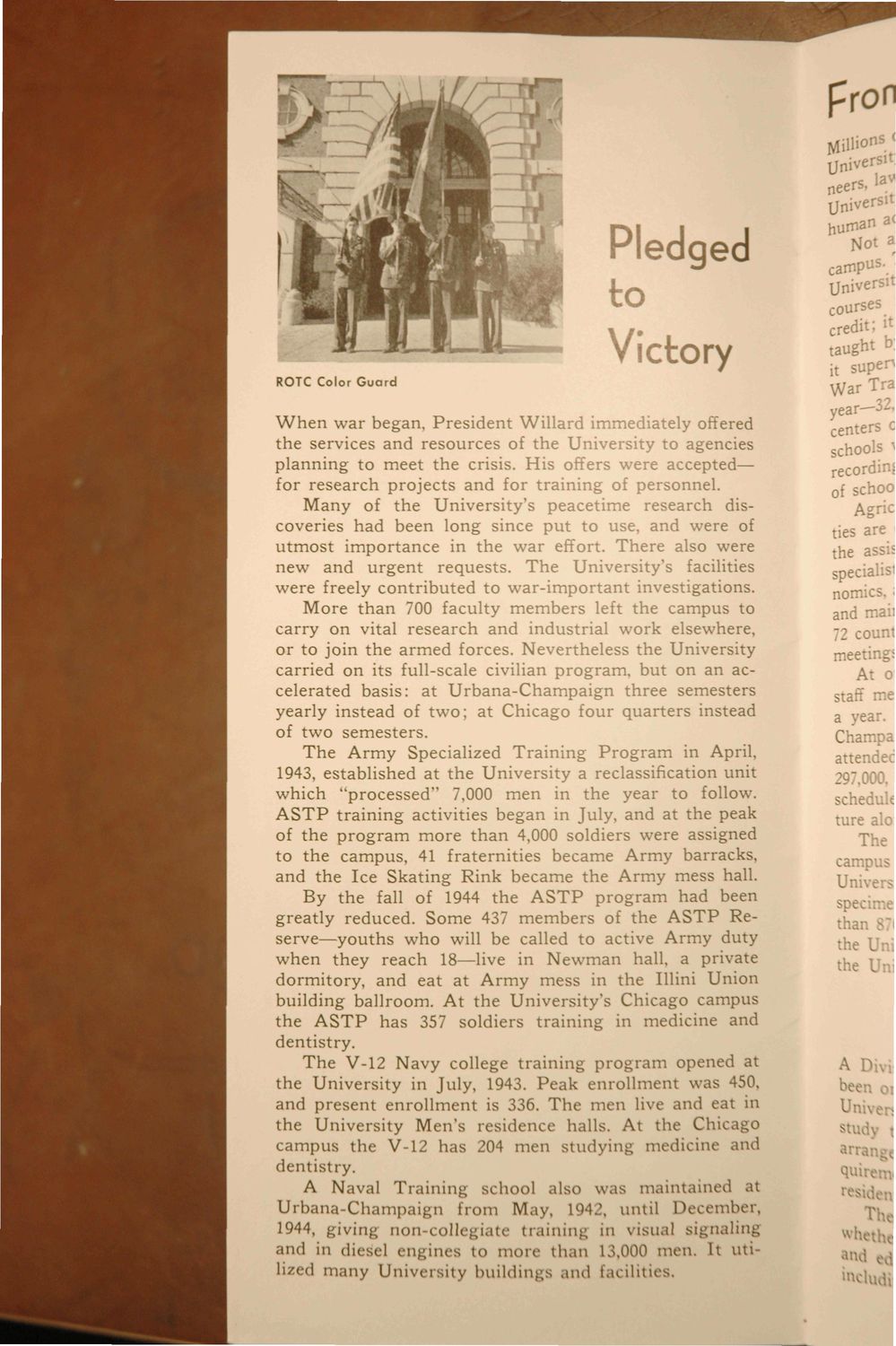| |
| |
Caption: Booklet - UI Informational Pamplet (1945)
This is a reduced-resolution page image for fast online browsing.

EXTRACTED TEXT FROM PAGE:
pillions UniUnive human Not us camp UnWe courses credit it taught b it su War year—32 centers schools recordi of Ag ' ties an the assi specialis nomic and 72 meeting At o staff a year. Champa * Pledged to Victory ROTC Color G u a r d W h e n war began. President Willard immediately offered the services and resources of the University to agencies planning to meet the crisis. His offers were accepted— for research projects and for training of personnel. Many of the University's peacetime research discoveries had been long since put to use, and were of utmost importance in the war effort. There also were new and urgent requests. T h e University's facilities were freely contributed to war-important investigations. More than 700 faculty members left the campus to carry on vital research and industrial work elsewhere, or to join the armed forces. Nevertheless the University carried on its full-scale civilian program, but on an accelerated basis: at Urbana-Champaign three semesters yearly instead of t w o ; at Chicago four quarters instead of two semesters. T h e A r m y Specialized Training P r o g r a m in April, 1943, established at the University a reclassification unit which "processed" 7,000 men in the year to follow. A S T P training activities began in July, and at the peak of the p r o g r a m more than 4,000 soldiers were assigned to the campus, 41 fraternities became Army barracks, and the Ice Skating Rink became the Army mess hall. By the fall of 1944 the A S T P program had been greatly reduced. Some 437 members of the A S T P Reserve—youths who will be called to active Army duty when they reach 18—live in Newman hall, a private dormitory, and eat at Army mess in the Illini Union building ballroom. At the University's Chicago campus the A S T P has 357 soldiers training in medicine and dentistry. T h e V-12 Navy college training program opened at the University in July, 1943. Peak enrollment was 450, and present enrollment is 336. T h e men live and eat in the University Men's residence halls. At the Chicago campus the V-12 has 204 men studying medicine and dentistry. A Naval Training school also was maintained at Urbana-Champaign from May, 1942, until December, 1944, giving non-collegiate training in visual signaling and in diesel engines to more than 13,000 men. It utilized many University buildings and facilities. ' 000, ture a". The campu Unive spec::: than the Uni the \ 1 Univ qui: T id
| |